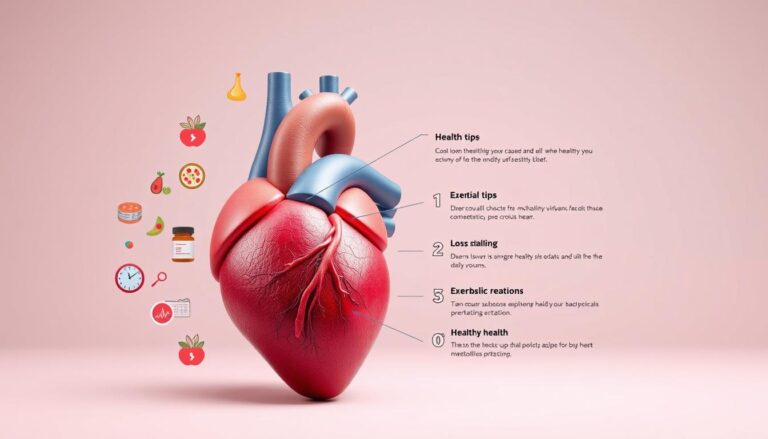What if changing what you eat really matters more than adding extra workouts? This article tests that idea and shows the evidence behind the claim Diet Over Exercise in Obesity.
We set clear expectations you’ll get research-backed guidance that compares both approaches and explains why food choices often drive bigger results for weight change.
Large studies and reviews show that tailored low-calorie plans paired with steady activity produce the best lasting weight loss. At the same time we explain the constrained energy model that helps clarify why total daily burn can stay similar despite more activity.
This is practical trustworthy information for Americans who want better health. The article will break down calorie quality effective plans, and the winning combo of portion control plus 175 minutes per week of combined strength and endurance.
Use this site as a starting point for real steps you can take today. We value movement for heart, mood, and function while making clear why food often does most of the heavy lifting for body weight.
Key Takeaways
- Evidence shows changes to food intake often produce larger weight loss than activity alone.
- Best results pair a customized hypocaloric plan with ~175 minutes/week of mixed activity.
- The constrained energy model helps explain why intake often matters most for weight.
- This guide gives clear, research-based information you can use day to day.
- Movement remains vital for heart and function, even if it adds less weight change.
Why Compare Diet and Exercise for Obesity Management Today?
With nearly 40% of U.S. adults affected, clarifying whether intake or activity drives results matters now more than ever.
Recent study summaries show many people still believe movement alone will solve weight issues. That view misses how calorie quality and portion control shape results.
Adults face unique lifestyle challenges: long sedentary workdays and easy access to ultra-processed foods. These realities make it vital to know which changes yield the biggest gains.
This section gives clear, peer reviewed information about management choices without jargon. It focuses on adults living with obesity so the guidance fits the majority seeking practical steps now.
Start with intake to trigger early weight change use activity next to protect muscle and support long-term maintenance.
Why this comparison matters: knowing the relative effects helps people set realistic goals and improve adherence. A lifestyle approach blends both tools, but sequencing food first, movement second often produces the best, lasting outcomes.
- Practical: helps answer Where should I start?
- Evidence based synthesizes peer reviewed study findings
- Behavioral pairs cognitive tools with actionable steps
What the Evidence Says Diet vs. Exercise in Weight Loss Outcomes
High quality evidence now shows that changes to what people eat drive most of the early weight change seen across studies. This section summarizes key findings that explain why reducing calories often outpaces added activity for weight change.

PNAS and the constrained energy model
The PNAS analysis used doubly labeled water the gold standard for measuring total energy expenditure across 34 diverse populations. After adjustments, highly active groups burned similar total daily calories as sedentary groups.
The constrained energy model explains this as activity rises the body conserves energy elsewhere keeping total daily burn within a narrow range. Herman Pontzer estimates that excess calorie intake drives weight gain about ten times more than lower activity in industrialized settings.
Systematic reviews and practical regimens
Across multiple articles and sources reviews found the best short term and long term outcomes come from a customized hypocaloric plan plus roughly 175 minutes per week of mixed strength and endurance training.
Portion control helps match food quantity to calorie targets while allowing cultural preferences and flexibility. Strength work also protects lean body mass during loss.
Long-term results: Franz meta-analysis
The Franz meta-analysis reported average loss of 5–8.5 kg at six months with calorie restriction plus activity, and about 3–6 kg maintained at 48 months. This shows meaningful loss is achievable and partly sustainable when strategies continue.
Reduce intake to prompt reliable loss; use structured activity to preserve function and support maintenance.
- PNAS uses robust methods and supports the constrained model.
- Systematic reviews favor hypocaloric, patient-specific plans with ~175 min/week of activity.
- Franz shows significant short-term loss and partial long-term maintenance.
Bottom line: multiple studies and sources converge lowering calorie intake is the most reliable path to body weight change, while structured activity preserves muscle and boosts health.
Calories In Calories Out and the Quality of Those Calories
In modern food environments, what you eat usually drives body weight more than how active you are. Small daily excesses add up fast when energy-dense options are everywhere.
Calorie intake as the dominant driver
Large analyses indicate overeating explains much of the rise in obesity across industrialized societies. Cheap, processed options make it easy to pass calorie needs without feeling full.
Ultra-processed foods and health risk
Sugary snacks frozen meals, and fast food items are high in calories and low in nutrients. These types of food raise the risk for metabolic and cardiovascular disease when eaten often.
From quantity to quality macronutrients and nutrient density
Hitting a calorie target matters but quality shapes hunger and adherence. Protein and fiber boost fullness; whole foods lower energy density.
- Clinical ranges: low-calorie plans ~800–1,500 kcal/day; very low-calorie under 800 kcal/day the latter needs medical supervision.
- Simple swaps: vegetables, legumes, eggs, Greek yogurt, lean proteins, whole grains, and nuts help meet goals with less hunger.
- Balance: aim for adequate protein and fiber to control blood sugar and support long-term adherence.
Improving food quality often reduces calories automatically by increasing satiety and lowering energy density.
Bottom line: quantity and quality work together. Matching calorie goals to nutrient-rich choices makes sustainable weight change far more achievable and improves the overall effect on health.
Diet Over Exercise in Obesity Why Intake Drives Most Weight Loss
Small, repeated food choices drive most long-term body mass shifts in modern societies.
This happens because a few hundred extra calories each day add up faster than the hours needed to burn them off. The PNAS work estimates that overeating has roughly a 10x greater influence on long-term gain than lower daily activity in industrialized settings.
Overeating versus energy expenditure the 10x estimate
The point is plain: many calorie-dense options make it easy to consume large totals quickly. By contrast, burning a similar number through movement often requires long sessions and can trigger appetite or metabolic shifts that offset the benefit.
Appetite, satiety, and adherence the behavioral edge
Choosing foods that fill you up protein fiber rich produce, and minimally processed carbs makes hitting targets easier. Smart portion options, such as pre-portioned meals or weighed servings, cut guesswork and help maintain consistency.
Reduce high-calorie choices first; use movement to protect strength and health.
- Practical role: swap an item to save hundreds of calories in minutes.
- Time efficiency: eating smarter often beats long workouts for quick loss.
- Real options: pick plans that match culture and daily life so you can stick with them.
Bottom line: focus first on calories and food quality for reliable early loss, and keep exercise as a vital support for long-term health and muscle preservation.
Exercise Still Matters Health Benefits Beyond the Scale
Physical activity shapes heart and mind health even when the scale barely budges. Regular movement improves key markers that predict long-term outcomes for adults. These gains occur whether or not body mass changes a lot.
Cardiometabolic mood and functional gains
Heart and metabolic health improve with steady activity. Insulin sensitivity, blood pressure, and cardiorespiratory fitness all show measurable benefit, lowering risk for chronic disease.
Mental health also benefits. People who move regularly report less anxiety, better sleep, and improved stress management. Those mood gains help sustain healthy habits.
Functional strength keeps daily life easier. Stair climbing, carrying groceries, and other tasks feel simpler after consistent strength and endurance work.
Small bouts add up consistency beats perfection when building lifelong habits.
- Start low impact: walking, cycling, or swimming work well for many adults.
- Progress toward mixed strength plus endurance to preserve lean mass and resting rate.
- Even without major weight loss, activity lowers risk factors and enhances quality of life.
The effect is clear: pair realistic movement with smart eating to protect health and keep gains long term.
Effective Dietary Strategies Backed by Research
Controlled comparisons reveal that managing daily calories drives the largest early body mass changes. Practical plans focus on safe calorie limits, balanced nutrients, and a clear path from loss to maintenance.

Calorie restriction safe ranges and nutrition
Low-calorie plans typically range from 800 to 1,500 kcal/day. Very low-calorie regimens are under 800 kcal/day and require medical supervision.
Balance matters: keep protein vitamins, minerals, and fiber adequate when calories fall to protect health and lean mass.
Alternate day fasting vs continuous restriction
Trials comparing alternate day fasting with steady daily restriction find similar loss when weekly calories match.
Both patterns can produce modest or large loss depending on total energy change choice should fit lifestyle and preferences.
Dairy inclusive and portion controlled approaches
Some studies show dairy rich plans produce small but meaningful benefits: about -1.16 kg weight and -1.49 kg fat mass (p < 0.001).
Portion control preportioned meals, plate methods, or measured servings makes staying on target easier and reduces decision fatigue.
Transitioning to maintenance
After reaching a goal gradually raise calories and monitor weight to stabilize results. Slow increases help avoid regain.
Increase intake stepwise and track trends small adjustments prevent big setbacks.
- Tailor interventions to culture, preferences, and medical needs for better adherence.
- Women and men both respond, but energy needs vary seek clinician input if on medications or with conditions.
- Use a food diary or app to track changes and refine strategy based on real-world feedback.
The Winning Combo Portion Controlled Diet Plus Consistent Activity
A mixed plan that pairs portion control with regular movement produces better outcomes than either alone. A systematic review found that a tailored hypocaloric plan plus at least ~175 minutes per week of combined strength and cardio yields about 5% greater weight loss when portion sizes are managed.
Targeting ~175 minutes/week of mixed strength and endurance training
Aim for two to three strength sessions and two to three cardio sessions that total roughly 175 minutes. Scale session length to fitness level shorter frequent bouts work well at first.
Pairing patient specific plans with realistic movement goals
Why this mix works: resistance work protects lean body mass while cardio improves cardiorespiratory fitness and boosts calorie burn. Portion control simplifies adherence by matching meal size to targets without complex math.
- Start with 15–25 minute sessions and lighter loads, then increase duration or intensity as recovery allows.
- Track simple metrics: steps, completed workouts, and average calories to guide progress.
- Maintain 150–200 minutes weekly rather than swinging extremes; consistency supports steady gains.
| Weekly Template | Session Type | Minutes | Purpose |
|---|---|---|---|
| Mon/Wed/Fri | Strength | 40 total | Preserve muscle, improve function |
| Tue/Thu | Cardio | 90 total | Boost fitness and daily burn |
| Weekend | Mixed light activity | 45 | Recovery and consistency |
This combined approach has the strongest evidence base for measurable, maintainable results.
Focus on steady progress and simple tracking. Health gains often appear before major scale shifts, which helps sustain motivation and long-term management of your body and weight.
Population and Health Contexts That Shape Results
Individual health profiles shape which approaches work best for weight and overall risk reduction. Adults with higher body mass often carry related conditions that affect appetite, energy, and safe activity choices.
Common risks include: type 2 diabetes, cardiovascular disease, obstructive sleep apnea nonalcoholic fatty liver disease GERD, and gallstones. Some causes link to genetics hypothyroidism Cushing’s disease, depression, or medications such as certain antidepressants and anticonvulsants.

Adults living with complex medical needs
Tailoring interventions matters because comorbidities change response and safety. A clinician can adjust plans around drugs that affect appetite or weight to improve results and reduce risk.
Accessible movement options include aquatic sessions, recumbent cycling, and short walking intervals for those with joint pain or sleep issues. These choices protect joints and boost adherence.
Personalizing nutrition and monitoring
Customize composition: set protein targets, add fiber sources, and consider dairy inclusion based on tolerance labs, and culture. Slow steady changes usually stick better than abrupt overhauls when multiple conditions exist.
- Monitor more than scale: track A1C, blood pressure, lipids, and sleep quality to capture broader health gains.
- Coordinate care: use this site as reliable information to discuss tailored interventions with your team.
- Start gradual: small, sustained shifts beat aggressive plans for safety and long-term success.
Match interventions to the person’s health profile small, targeted steps often yield the biggest, safest gains.
Real World Steps to Prioritize Diet Without Neglecting Movement
Start by making small swaps that cut high-calorie items while keeping meals satisfying and simple. A clear short plan beats perfection. Use practical steps you can repeat each week.
Reduce ultra processed items and favor fiber rich choices
Do a pantry sweep. Remove sugary snacks frozen meals, and fast-food temptations and add produce, legumes, and lean protein.
Plan portions and track intake
Use an app for two weeks to learn your baseline. Then adjust portions to meet goals. A simple plate rule protein + produce + whole grain + healthy fat keeps quality high.
- Busy-life options: pre-portioned meals, rotisserie chicken, frozen vegetables, and Greek yogurt save time.
- Daily alignment: pack snacks, plan restaurant orders, and schedule short, reliable activity sessions.
- Mini strength work: brief home sessions and brisk walks help preserve muscle and support weight loss.
Small, steady changes add up consistency beats perfection.
Visit this website or the site tools for shopping lists, templates, and simple trackers that make adherence easier. Steady steps produce lasting change.
Conclusion
Multiple sources now agree: sensible calorie targets and higher quality food types deliver the clearest path to sustained weight change for the body.
This study backed view shows that prioritizing diet and portion control yields the fastest measurable weight loss, while regular activity preserves muscle and broader health for adults and patients.
Choose interventions you can stick with portion‑controlled meals, a weekly plan near 175 minutes that includes some strength work simple tracking, and clinician support when needed.
For patients and women especially, tailor steps to medical needs and aim for small, steady changes. Visit this site for related articles, templates shopping guides, and beginner plans that help turn sources into action.





